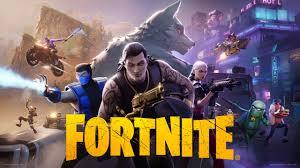Advertisements
You esports became popular in competitive market. They have changed the way we play and watch digital entertainment. This esports guide shows everything about the world of esports. It goes from the origin to the great economic impact it has today. For example, 82.9% of gamers have heard of esports. And 48.8% participate in these competitions. This shows that more people are getting interested in this industry.
63.8% of Brazilian players follow these competitions. This shows how the esports are popular all over the world. The events fill arenas and attract many fans who watch esports content every day. Only 1.1% of players do not enter this universe. This article will give you information about the most popular genres and the importance of technology. This way, you will become an esports expert.
Advertisements
What are Esports?
Esports, or eSports, are video game competitions. Players compete alone or in teams. The term “esports” was coined in 1988. Since then, they have grown a lot, especially with the internet. Now, they attract crowds and money, showing that many value them. In Brazil, the General Sports Law recognizes esports. This includes games for fun and professional competitions.
Definition and Evolution of Esports
THE definition of esports generates debate. For some, sports mean physical effort. But others say that video games are also sports because they have clear rules. Psychologist Alessandra Dutra highlights a difference between professional gamers and addicted players. She talks about the importance of discipline. Thus, esports have evolved in popularity and in how they are seen as legitimate sports.
Advertisements
Comparison with Traditional Sports
Esports resemble traditional sports in many ways. Games like League of Legends and Dota 2 require strategy and teamwork. This is similar to sports like football and basketball. On the other hand, Veli-Matti Karhulahti notes that esports are controlled by companies. This is different from traditional sports. Still, esports needs more recognition to be seen as equal to traditional sports.
The Growth of the Esports Industry
The esports industry has changed a lot and has become quite important. It has attracted many people from all over the world. In 2020, the esports market made almost $947.1 million. More than 215 million fans show how engaging this market is.
Growth and Revenue Data
Esports growth continues strong, despite obstacles. The pandemic has changed how events take place, bringing more games online. This has led to more people watching tournaments virtual in digital platforms.
- Mobile games like PUBG Mobile have brought new fans to esports.
- Big events like the League of Legends World Championship show that a lot of people follow esports.
- Famous brands, such as Coca-Cola and Red Bull, have invested in the sector, helping its growth.
Esports Audience Demographics
Many young people and adults up to 40 years old enjoy esports. They not only watch the games but also follow related content on social media. Research indicates that 82.91% of gamers are aware of esports, with 48.81% actively participating.
Interest in esports is high in many places. South Korea is a leader in this area. Brazil is also growing in this market, despite facing challenges. Games and new technologies, such as virtual reality, are making more people interested in esports.
Popular Genres and Titles in Esports
The world of esports is full of action and variety. It has several genres that capture the attention of those who play and watch around the world. The most popular are: MOBAs, FPS, fighting games and sports simulators. Each one brings a different kind of emotion and fierce competition.
MOBA – Multiplayer Online Battle Arena
You MOBAs have gained many fans around the world. Games like League of Legends and Dota 2 are great highlights of this style. They have huge international competitions, such as The International de Dota 2, with huge prizes. In these games, two teams of five seek victory, using strategy and cooperation.
FPS – First-Person Shooter
The games of FPS, as Counter-Strike and Valorant, attract the attention of millions. CS:GO has a large competitive scene, with tournaments in various places. The live excitement and the skill required make the FPS a beloved choice in esports.
Fighting Games and Sports Simulators
Fighting games, like Street Fighter and Mortal Kombat, have a rich history in esports. Events like EVO bring together a lot of fans. They value the skills of the players. sports simulators, as EA Sports FC and NBA 2K, bring sports to the virtual world in a realistic way. These games attract players and fans, showing the strength of this segment.
How Does Competition Work in Esports?
To the esports competitions happen in different styles, such as tournaments and leagues. These showcase the variety and complexity of this environment. Some events are live, in large venues, and others are online. It depends on the game and what the audience prefers. This variation helps find the best way to attract and keep fans interested.
Tournaments and Leagues
Esports tournaments bring teams and players together for quick and intense competitions. They can take many formats, such as knockout, group or Swiss. Unlike tournaments, leagues run for a longer period of time. Teams compete for weeks, accumulating points to see who will make it to the playoffs.
Competition Formats
The variety in the competition formats attracts a lot of attention from fans. The most popular formats include:
- Elimination: Teams face each other and whoever loses is eliminated from the tournament.
- Groups: Teams are divided into groups. The best teams advance to the next stages.
- Swiss: Everyone plays a set number of games. The best ones advance.
These formats make the competition more interesting and exciting. Major events, such as world championships, attract millions of viewers. They show the huge impact of esports on the world of entertainment.
Importance of Technology in Esports
Technology is crucial to the development of esports. It affects the creation, gameplay, and how viewers watch. The number of players is now expected to reach 3.32 billion by 2024. This shows how popular gaming is becoming. Technology has brought innovations that greatly improve the experience for both players and viewers.
Streaming and Digital Platforms
Platforms like Twitch and YouTube have changed how we see esports competitions. They make content accessible to everyone, allowing millions of people to watch live games. These platforms play a vital role in growing esports viewership and bringing in new fans.
With cloud gaming, players can compete without needing expensive computers. They use remote data centers. This helps more people compete, even where the internet is weak. To learn more about this trend, esports streaming, it's good to see how platforms meet the needs of the public.
Technological Innovations and the Future
5G networks will improve online gaming, with less lag and smoother gameplay. This not only improves the games themselves, but also makes the experience more interactive for those watching. The combination of AR and VR will transform the way we play, making everything more immersive.
Furthermore, combining games and technological innovations opens doors to new business models. For example, purchasing in-game items using blockchain. This creates new economies in the gaming world and signals a future of opportunities and challenges for esports.
Top Esports Players and Teams
The growth of esports has highlighted the pro players, athletes with exceptional skills. They compete in global competitions, becoming celebrities. This has attracted sponsors and improved the status of their teams.
Pro Players: What They Are and Qualifications
Pro players They play esports professionally and are experts in the games. To be one of them, you need to train hard and know the game well. They practice a lot and face the pressure of competition, which can affect their mental health.
Notable Teams in the Industry
LOUD and other teams are gaining international recognition. They compete in leagues and invest in training facilities. These actions raise the profile of the games and attract important sponsors to the industry.
The Esports Audience: Who Are the Fans?
The esports audience is diverse and ever-changing, showing how this market is growing. Most fans are between 10 and 24 years old. They enjoy improving their game by watching tournaments. This mixes learning and fun.
Audience Behavior and Preferences
Esports fans are known for their dedication and passion. They enjoy watching the games together and experiencing the excitement of live tournaments. This passion creates a very close-knit and active group. Some of the things they enjoy most about tournaments are:
- Improve your skills
- Learn from the professionals
- The challenge of tournaments
- A passionate hobby
- A unique way to play
Esports fans love brands that support their passion. They value products and prizes that brands offer. This shows how important these gifts are to the world of esports. Promotions such as giveaways or live streams also attract a lot of attention.
Sponsorships and Advertising in Esports
The growth of esports has opened doors for brands looking to reach a dedicated audience. This has transformed the esports sponsorships in an essential tactic for companies exploring this new territory. These partnerships not only increase brand visibility, but also create a direct connection with fans.
Partnership Opportunities for Brands
Big brands are making a splash at esports tournaments, showing the power of this advertising. One study found that the esports audience, now at around 454 million fans, is growing at a rate of 13.5% per year. This signals an incredible opportunity for advertisers, comparable even to the reach of traditional sports.
Brands investing in esports can see a return of up to 500% on their investment. These results highlight the huge potential of sponsorships in this space.
- Esports Sponsorships are 74% of the sector's revenue.
- In 2016, more than 600 sponsorship contracts were signed, showing great interest.
- Non-endemic brands such as Lexus and Visa are also exploring this market.
The strength of brand partnerships often comes from the connection between brands and players. This synergy ensures authenticity and earns the respect of the public. Well-positioned brands in esports earn consumer loyalty and influence their purchasing choices.
The Impact of Esports on the Economy
Esports are becoming an important part of the global economy. They are not just entertainment. They are a money-making force and generate many jobs in the esports sector. This industry has changed the way we interact with games, creating opportunities for new talents shine and build their careers.
Job Creation and Career Opportunities
The demand for qualified professionals in esports is growing rapidly. Jobs range from event organizers to online marketing specialists. There are many job opportunities in esports, helping the industry grow.
- Event and Tournament Managers
- Game Data and Statistics Analysts
- Digital Marketing and Advertising Professionals
- Game Developers and Technical Support
With audiences reaching over 1 million people at events, new areas are opening up. A good example is the DOTA 2 International in 2019, where the prize pool was over US$13.5 million. This money has a huge economic effect on esports, creating communities and a global network.

Educational projects like PlayVS leagues show us how great esports can be in schools. They not only open doors to careers, but also help improve students’ grades and attendance. With so many opportunities and a growing sector, there are many opportunities to build a career. Esports are very important economically and socially, attracting talent and offering rewarding careers.
Conclusion
Esports is a new form of entertainment that is growing rapidly. This esports guide summary shows how far the industry has come and its future potential. The esports betting market is expected to reach an estimated $1.41 billion by 2033. This represents an annual growth of $18.51 billion between 2024 and 2033.
The popularity of esports is increasing among young people. This is thanks to technology and easy access to digital platforms. Most fans are over 21 and participate in various tournaments. Changes in laws are also important for the future of esports. This was the subject of a conference in Portugal, discussing the regulation of the sector.
In short, esports are becoming an important part of global entertainment. They combine a growing audience with a booming betting market. Explore this vibrant world full of opportunities. To learn how technology is changing esports, check out this link.



